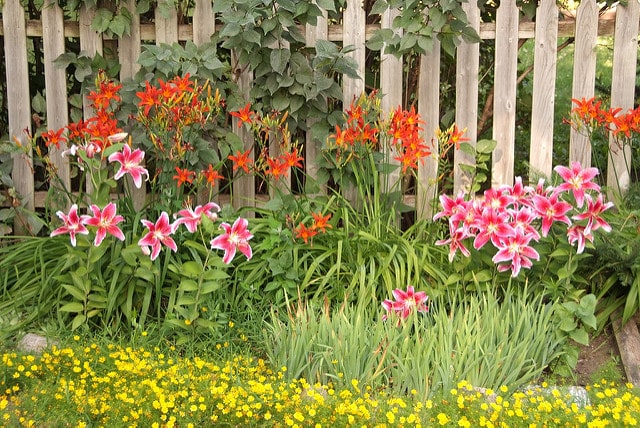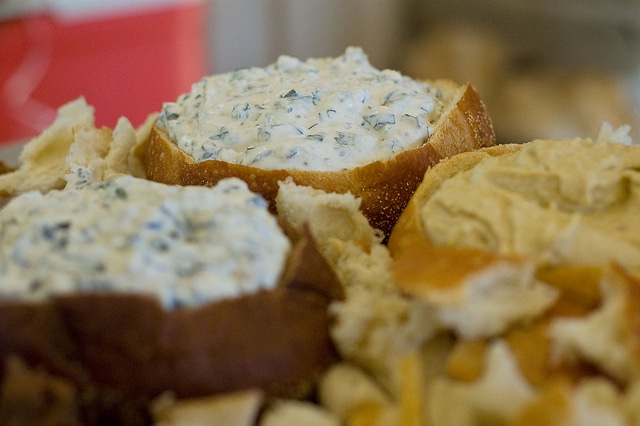
6 Eco-Friendly Ways Home Gardeners Can Help Our Honeybees
The sight of a bee may prompt a lot of us to run away in fear — but the truth is that without these buzzing creatures, we’d be done for. We can thank pollinators like bees for our survival. In fact, one out of every three bites of food we eat can be traced back to bee activity.
But unfortunately, our presence has had a profoundly negative effect on the bee population. Climate change, pesticide use, and habitat loss have all contributed to a phenomenon known as Colony Collapse Disorder. American beekeepers estimate that one-third of all bee colonies across the country have now vanished as a result, while others continue to struggle.
So what can we do about it? While protections for pollinators need to be improved on a global scale, there are a surprising number of things you can do to in your own backyard or garden. Here are six sweet ways to help the honeybees at home.
1. Choose Your Plants Carefully
You might assume that any flower is appealing to a bee, but there are actually certain varieties that are better for bees than others. As a general rule, opt for native species and wildflowers if you can. You should also choose single flower tops instead of doubles, as they’re easier to access. “Bee” sure to choose a variety of flowers that will bloom throughout the spring, summer, and fall so that our buzzy friends always have something to eat. Want a place to start? Plant some flowering herbs, sunflowers, bee balm, butterfly bush, coneflower, bachelor’s buttons, daisies, or marigolds to make your bees happy.
2. Don’t Use Pesticides
Insecticides, herbicides, and other chemicals should be outlawed in your garden — even the so-called “bee-friendly” varieties. They’re toxic to bees! Not only will they kill them, but the bees may even inadvertently take these chemicals back to the hive, where they can easily end up in your local honey. Natural pesticides such as ladybugs, neem oil, epsom salt, or homemade pepper sprays are just as effective and won’t hurt the bees.
3. Provide Water and Shelter
If you thought bees need only a hive and don’t need to hydrate, you’re mistaken. Bees need water to survive just like any other animal. By creating a shallow water source for them out of a flat container or a sloped bird bath, you’re providing them a safe spot to take a drink when they need it. Bees also need a place to take refuge in inclement weather or when they need a break. Designate a spot in your garden to grow wild, add in some untreated wood slabs, or arrange your flower pots in a sculptural way that can double as a bee sanctuary.
4. Don’t Over-Weed
You might be obsessed with pulling every little weed that pops up in your yard. But you might want to think twice about removing flowering weeds. Clover and dandelions, for example, can provide a lot of food for our striped friends. And as a side note, don’t be too quick to remove plants, vegetables, and flowers until the end of the season; feel free to deadhead and harvest, but leave them the ground so that bees can access them when other options may not be as plentiful.
5. Help a Tired Bee
Bee-lieve it or not, our buzzing buddies can get worn out; after all, they can pollinate thousands of flowers a day and their flying muscles have to beat an astounding 12,000 times per minute just so they can stay airborne! If you spot a bee that looks like it’s struggling to fly, it may need your help. You can provide this bee with some much-needed energy by offering it a mixture of two tablespoons of white granulated sugar and one teaspoon of water. Leave the mixture in a spoon or on a plate and bring it to the bee to drink — or put it in a shallow container and leave it in your garden so that the bees know where to find it when they need a boost.
6. Buy Local
Even if you don’t have a green thumb, you can still make a big difference in your community by supporting local organic farms and buying local honey. These efforts ensure that sustainable farming continues in your area and that beekeepers there are able to continue helping these vulnerable populations. As a bonus, you’ll end up eating more delicious produce and may even relieve your allergy symptoms.
With these tips in mind, you can make a real impact — and encourage others to adopt the same practices — in your town. If everyone works together to help the bees, this essential species may be able to make a comeback.
Author bio: Greg Long has nearly completed his three-year journey to becoming a Master Beekeeper. He’s currently enrolled in Master Beekeeping apprentice classes through the Oregon State Master Beekeepers’ Program. With the help of his mentor, Greg has honed his beekeeping skills and raised a hive of healthy, happy bees.




Post a comment